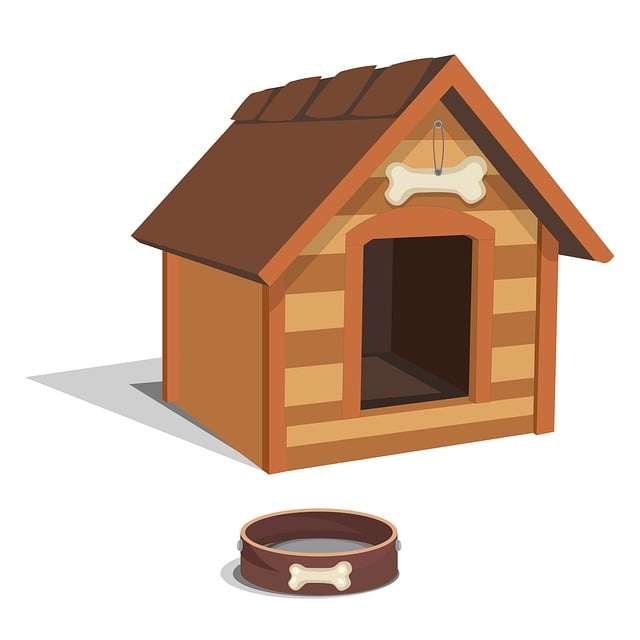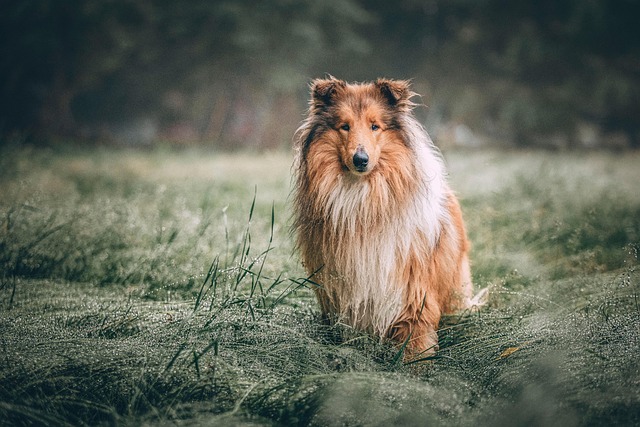Heated dog houses provide warmth and comfort for pets in colder climates, featuring insulated walls, waterproof exteriors, and heating elements. Proper insulation selection is key, with natural fibers like wool and fleece offering breathability while synthetics ensure durability. These houses retain heat, saving energy costs and promoting better sleep for dogs. Designing a heated dog house involves prioritizing insulation, strategic heating element placement, compact size, and airtight seals. Installation requires a sheltered location, proper insulation, and regular maintenance to ensure optimal temperature and safety. Insulated heated dog houses have gained popularity in colder regions, with DIY builds and advanced technology offering customizable solutions for various breeds and climates.
“Uncover the ultimate solution for your furry friend’s comfort with insulated heated dog houses—a game-changer for pet owners. This comprehensive guide explores the art of retaining heat, ensuring your dog stays cozy all year round. From understanding the basic concept to delving into advanced design features, we’ll navigate through materials, benefits, and installation tips. Discover real-world success stories and glimpse into future trends shaping the heated dog house landscape. Warm up to the idea of a comfortable canine sanctuary.”
Understanding Heated Dog Houses: The Basic Concept

A heated dog house is a specialized structure designed to provide warmth and comfort for pets, particularly in colder climates or during colder seasons. The basic concept revolves around insulation and heat retention, ensuring the dog’s living space remains at an optimal temperature. These houses are equipped with various features such as insulated walls, a waterproof exterior, and a source of heat, typically in the form of a heating element or a heated pad.
The primary goal is to create a cozy sanctuary for dogs that mimics their natural environmental preferences, allowing them to relax and sleep soundly without the chill. By understanding the importance of insulation, pet owners can select or design a dog house that offers superior heat retention, making it a practical and beneficial investment for their furry friends’ well-being.
Materials Used for Insulation in Dog Houses

When it comes to keeping your furry friend cozy in a heated dog house, the choice of insulation materials plays a significant role. Typically, insulation is crucial for maintaining the desired temperature and ensuring efficient heat retention. Natural fibers like wool, fleece, or cotton are excellent options as they provide excellent warmth while allowing airflow, preventing moisture buildup. These materials are also safe, non-toxic, and environmentally friendly.
For enhanced durability and long-lasting performance, many heated dog houses incorporate modern synthetic insulations such as polyfill or foam. These man-made materials offer superior insulation values, resisting compression and maintaining their effectiveness over time. They are lightweight, easy to install, and often come with water-resistant properties, making them ideal for outdoor use in various weather conditions.
Benefits of Using Insulated Dog Houses

Insulated dog houses offer numerous advantages for pet owners looking to provide comfort and safety for their furry friends, especially in colder climates. One of the most significant benefits is the ability to retain heat, ensuring your dog stays warm during chilly days and nights. Unlike uninsulated models, these homes create a cozy environment by trapping body heat, reducing the need for constant heating sources. This not only saves energy costs but also provides a consistent temperature, enhancing your dog’s overall well-being.
Additionally, heated dog houses promote better sleep and rest for your pet. Insulation helps maintain a comfortable interior temperature, preventing cold drafts and sudden temperature drops. As a result, dogs can relax and snooze peacefully without the discomfort associated with cold weather. This feature is particularly beneficial for senior dogs or breeds with thinner coats, ensuring they remain healthy and happy throughout the winter months.
Designing for Retained Heat: Key Features

Designing a heated dog house requires careful consideration of key features that ensure efficient heat retention. Insulation is paramount; using high-quality materials like foam or wool can create an effective barrier, trapping warmth generated by heating elements. The placement of these elements is also crucial; strategically positioning them within the dog house, such as near the floor and walls, maximizes heat distribution.
Additionally, considering the overall size and shape of the structure plays a vital role. Smaller, compact designs minimize heat loss, while curved or rounded edges can help reduce cold spots. Airtight seals around doors and windows further enhance heat retention, preventing drafty conditions that can quickly cool down an otherwise well-insulated space.
Installation and Maintenance Tips for Insulated Dog Houses

Installing an insulated dog house is a great way to ensure your furry friend stays cozy during colder months. Begin by choosing a location that offers protection from wind and direct sunlight, yet allows for some airflow to prevent excessive humidity. Proper insulation installation is key; use materials designed for pets and follow manufacturer guidelines closely. Remember to seal any gaps or openings to maintain heat efficiency.
Regular maintenance is crucial for your heated dog house’s longevity. Periodically check for signs of wear and tear, especially in the insulation and seals. Clean the unit thoroughly to prevent the buildup of dirt and debris, which can affect heat distribution. During warmer seasons, consider ventilation adjustments to avoid overheating. Always follow safety protocols, ensuring electrical connections are secure and well-maintained to prevent any hazards.
Real-World Examples: Successful Insulated Dog House Builds

In the realm of pet care, providing comfort and safety is paramount, especially for dogs left outdoors in colder climates. Insulated dog houses have emerged as a game-changer, offering a solution to keep canine companions warm during chilly seasons. Real-world examples of successful builds showcase the effectiveness of this design concept. For instance, some crafty DIY enthusiasts have created heated dog houses that are not just insulated but also equipped with heating elements, ensuring a cozy sanctuary for their furry friends. These innovative structures feature double walls, a gap filled with insulation, and a heat source, creating an efficient heat retention system.
The success of these builds lies in the careful selection of materials. Insulation made from natural fibers or modern synthetic options prevents heat loss, while energy-efficient heating mats or small heaters maintain optimal temperatures. Such heated dog houses have received rave reviews from pet owners, who appreciate their ability to provide year-round comfort for dogs, making them a popular choice for those living in regions with harsh winters.
Future Trends in Heated Dog House Technology

As technology continues to evolve, so does the innovation in pet care. Future trends in heated dog house technology aim to provide even more comfort and safety for our furry friends. Smart heating systems will become more prevalent, allowing owners to control temperature remotely via apps, ensuring their dogs stay cozy during cold weather.
Customizability is another key focus, with heated dog houses incorporating advanced materials and designs that offer adjustable insulation and ventilation. These advancements cater to different breeds and climates, enhancing the overall well-being of pets. Additionally, integration of sensors for automatic heat activation based on ambient temperature could become standard, making heated dog houses more energy-efficient and environmentally friendly.
